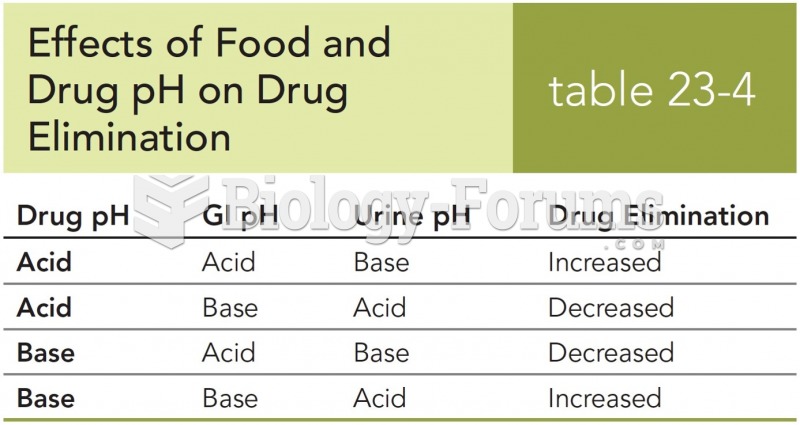|
|
|
The lipid bilayer is made of phospholipids. They are arranged in a double layer because one of their ends is attracted to water while the other is repelled by water.
People who have myopia, or nearsightedness, are not able to see objects at a distance but only up close. It occurs when the cornea is either curved too steeply, the eye is too long, or both. This condition is progressive and worsens with time. More than 100 million people in the United States are nearsighted, but only 20% of those are born with the condition. Diet, eye exercise, drug therapy, and corrective lenses can all help manage nearsightedness.
Approximately one in four people diagnosed with diabetes will develop foot problems. Of these, about one-third will require lower extremity amputation.
Pope Sylvester II tried to introduce Arabic numbers into Europe between the years 999 and 1003, but their use did not catch on for a few more centuries, and Roman numerals continued to be the primary number system.
Most childhood vaccines are 90–99% effective in preventing disease. Side effects are rarely serious.
 This moose exploits the twigs and buds of woody plants for the food it needs to survive a cold north
This moose exploits the twigs and buds of woody plants for the food it needs to survive a cold north
 Campylobacter bacteria are found in most chicken meat. If chicken meat is not well cooked or raw mea
Campylobacter bacteria are found in most chicken meat. If chicken meat is not well cooked or raw mea





